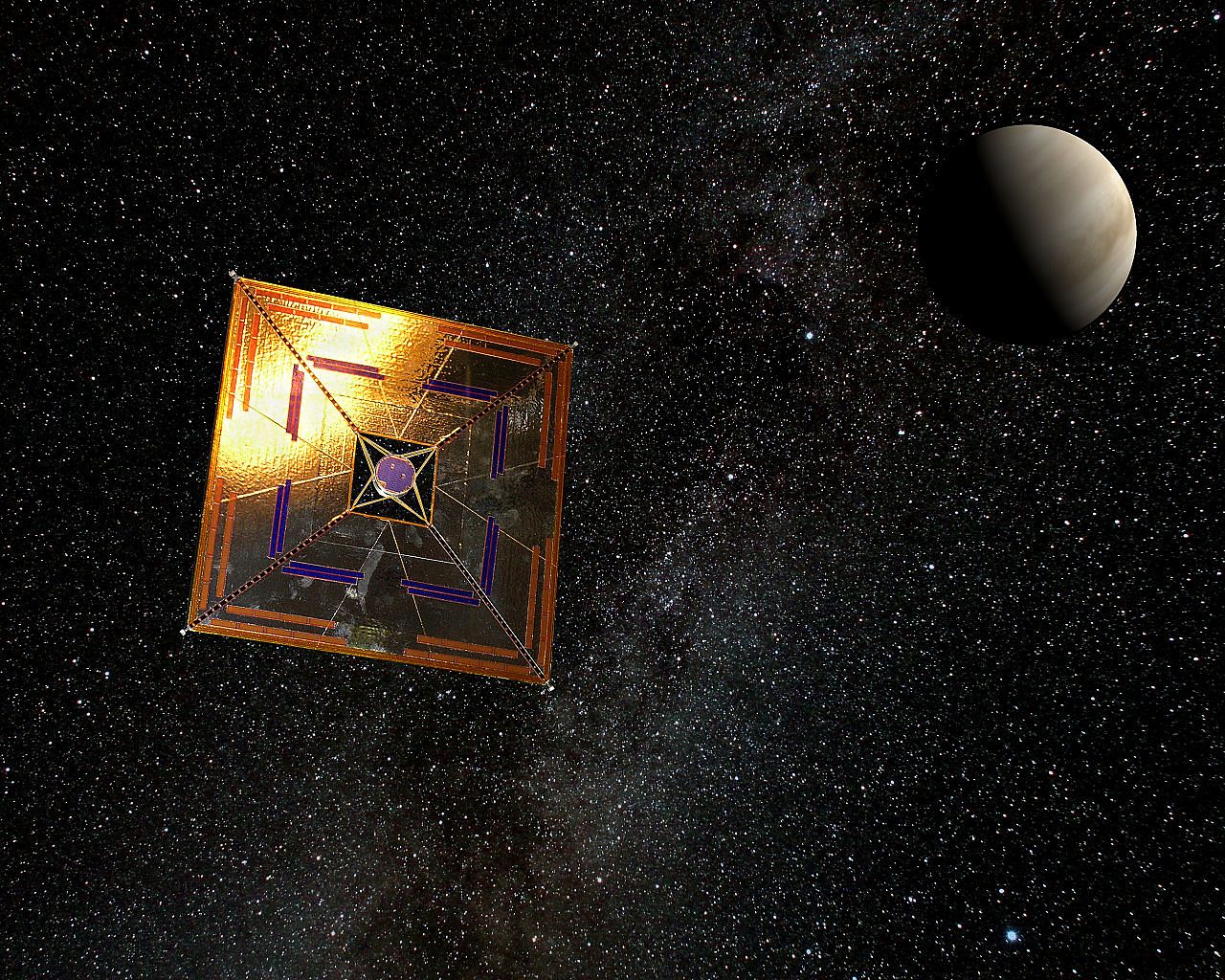The era of space sailing has begun, says MSc student Sander Hiddink. He believes solar sails can be used to steer observation satellites on the dark side of the Moon.
After having sailed the oceans for thousands of years, mankind is taking sailing to the next level. On 8 December 2010, IKAROS (Interplanetary Kite-craft Accelerated by Radiation Of the Sun) passed by Venus at a distance of 80,800 kilometres. It was the first spacecraft to successfully demonstrate solar-sail technology in space.
This success inspired MSc student Sander Hiddink (Aerospace Engineering). For his internship project he thought of a way to keep a satellite sailing in circles on the dark side of the Moon using solar sails like the ones that propel IKAROS.
Hiddink did his internship at the University of Strathclyde in Glasgow (Scotland) under supervision of TU alumna Dr. Jeannette Heiligers, who has since returned to TU Delft as Marie Skłodowska-Curie Research Fellow. Their effort resulted in an article, ‘Solar sail Lyapunov and Halo orbits in the Earth-Moon three-body problem’, which was published last month in the journal Acta Astronautica.
Solar sails are a form of spacecraft propulsion using the radiation pressure from the sun. The sails consist of a large ultra-thin mirror. The thrust is generated by photons reflecting off this mirror.
“The potential of solar sailing lies in the fact that it does not rely on an on-board propellant source,” said Hiddink. “Solar sails enable long-lived missions that have many novel applications.”
The student devised a sailing strategy to keep a satellite circling a Lagrange point. In celestial mechanics, Lagrangian points are positions in an orbital configuration of two large bodies where a small object, like a satellite, can maintain a stable position relative to the two bodies because the gravitational pull from both sides cancel each other out.
Lagrange spots are interesting places to position satellites for high-latitude observations of the Earth or the Moon, or for monitoring the Sun for space weather forecasting.
The direction of the photons impinging on the solar sail changes continually, which influences the magnitude and direction of the available solar sail acceleration over time.
Hiddink and Heiligers tackled the mathematics involved by using an iterative approach. Starting from a natural Lagrange-point orbit, the solar sail acceleration is gradually increased and the result of the sail performance is used as an initial guess for a slightly better next sail performance.
Ultimately the two researchers devised three in-plane steering laws for the sail, two where the attitude of the sail is fixed perpendicular to the Earth–Moon line and one where the sail always faces the Sun.
“It’s cool to think that maybe one-day spacecraft will be using these kinds of techniques to sail to the moon and maybe also to other planets,” said Hiddink. “It sounds like science fiction.”



Comments are closed.